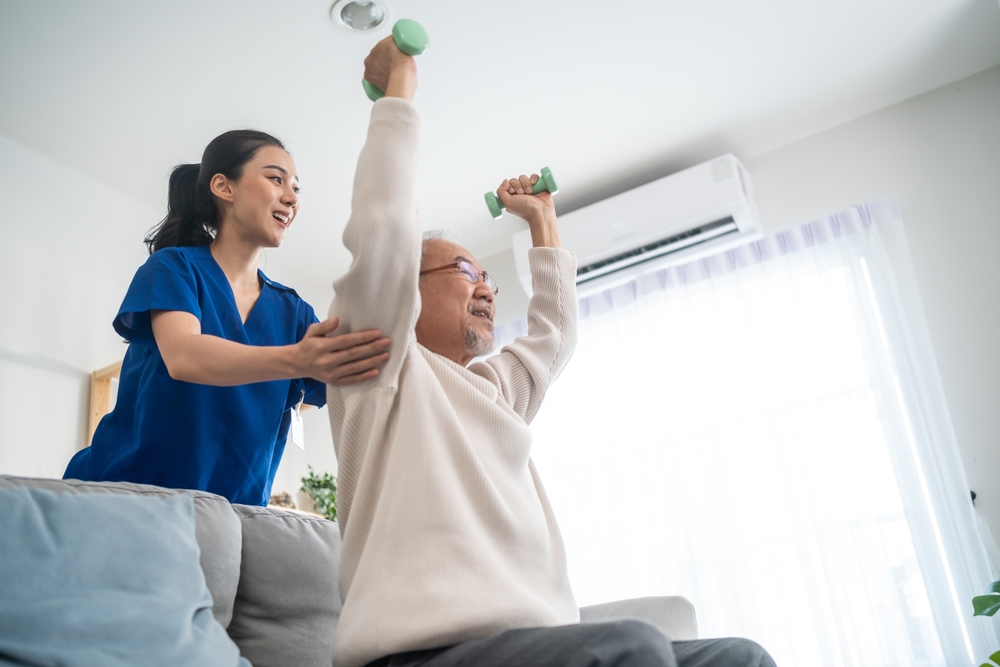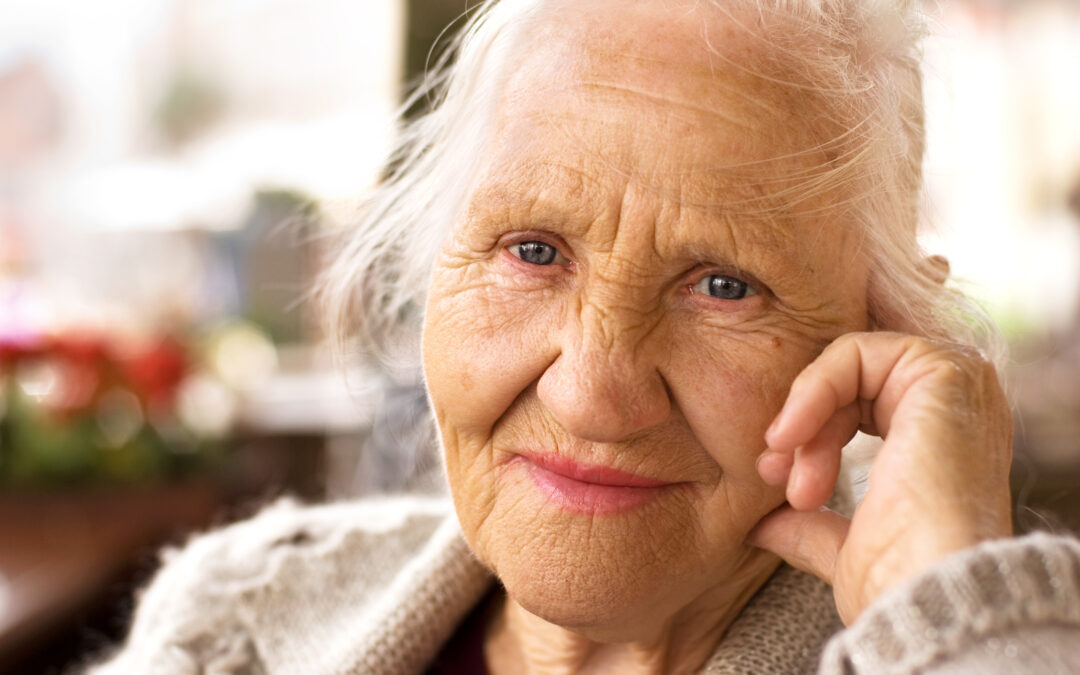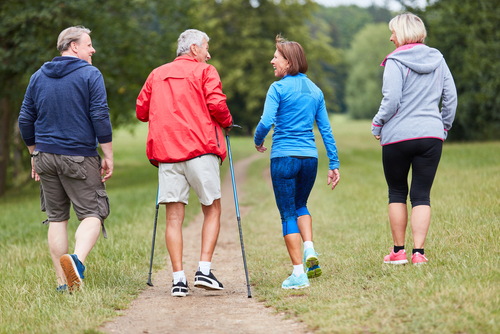
by Odom Rehab | Sep 19, 2023 | News
Are you a healthcare professional seeking a fulfilling career opportunity? Odom Rehab is a leader in providing high-quality outpatient therapy within assisted living communities—And we’re expanding our team!
We have numerous job openings (occupational therapists, physical therapists, and speech therapists) across various locations. If you’re looking to make a meaningful impact on the lives of seniors while enjoying a rewarding professional journey, learn more about our open positions below:
Odom Rehab Current Openings
Occupational Therapy Careers
- Full-time: Maplewood, Highland Park, Redwing, Rochester, Roseville
- Part-time: Redwing, Rochester, Faribault/Owatonna
Learn more about our occupational therapy services!
Physical Therapy Careers
- Full-time: Inver Grove Heights, Woodbury, Columbia Heights, White Bear Lake, Roseville, Mankato, Rochester, Owatonna, Waconia
- Part-time: Mankato, Owatonna, Rochester, Waconia
Learn more about our physical therapy services!
Speech Therapy Careers
- Full-time or Part-time: Waconia
Learn more about our speech therapy services!
Why Odom Rehab: We’re Here to Make a Difference
For us, it’s not just about exercise, it’s about enriching lives. Odom Rehab’s unique approach places therapists within assisted living communities. This allows for more personalized, convenient care, which creates a direct impact on residents’ quality of life.
When you work for Odom Rehab, you’ll get:
A Supportive Environment
From our ongoing training programs to our open-door policy for discussing concerns and ideas, Odom Rehab fosters a nurturing and progressive work environment.
Competitive Compensation and Benefits
We offer attractive packages that include competitive salaries, health benefits, and opportunities for professional development.
Flexibility
With multiple locations for full-time and part-time positions, you can choose a work setting that best fits your lifestyle and career goals.
The Chance to Make a Real Difference
Our therapists don’t just provide treatment, they build lasting relationships with residents, helping them achieve more independence and a better quality of life.
How to Apply
If you’re a dedicated and compassionate professional, we want to hear from you. Visit our careers page to apply or learn more about these exciting opportunities.

by Odom Rehab | Nov 30, 2022 | News
I’ve found the reason people enter the senior living industry is to help our older generations thrive in their senior years. Unfortunately, too often, these communities don’t have much time to do this. One research report found that approximately 60% of residents will move out of assisted living to transition to a skilled nursing center after a median stay around 22 months, . (AHCA/NCAL). If we can address some typical health issues for senior living residents – or take steps to help minimize injuries that lead to health issues – the resident and the community benefit. Not only will the resident feel better and have a better quality of life, but a safer, stronger and healthier resident will stay in the community longer.
A study by the U.S. Department of Health and Human Services found that 24 percent of residents left assisted living communities over the course of 12 months.
- 1/3 of all residents who left on a yearly basis either died in the community or elsewhere
- Most of the remainder who left went to a nursing home or some other residential care setting or ALF. The need for more care was the most common reason cited by respondents for leaving an ALF.
An article in Senior Housing News points out that “For young, healthy people, nine out of 10 times, (primary care visits) are wellness visits…But for seniors, the focus of primary care is chronic care management…in general the term applies to severe, persisting conditions, everything from hypertension to arthritis to dementia to ALS. As people age, these conditions multiply: it is common for senior living residents to have between four and eight conditions.”
According to government statistics the impact of falls on seniors’ health is well documented and is one of the most common causes of chronic conditions – and death! In fact the number of deaths among seniors increased about 30% from 2009 to 2018. Stating that as the U.S. population aged ≥65 years increases, the study’s recommendations to address the rising number of deaths from falls in this age group include:
- Talk to your doctor
- Do strength and balance exercises
- Have your eyes checked
- Make your home safer
The CDC continues by saying that “most falls are caused by a combination of risk factors. The more risk factors a person has, the greater their chances of falling.” So at Odom Rehab we are committed to minimizing falls and the risk of chronic conditions. Here are 3 ways we do this.
- Assess the safety of the resident’s environment
- Provide therapy to improve strength and balance
- OT that helps seniors adapt to changes in vision
We’ll go into more detail next month about the specifics of how we address these 3 areas.
______________________________________________________________________________________________________________
References:

by Odom Rehab | Oct 27, 2022 | News
Most interventions we see from nurses at senior living communities involve the resident doing some form of physical activity. But how do we know if they’re doing it or how effective it is? Tracking activity provides accountability and insights about how somebody is responding.
Low-Tech Tracking
There are numerous low tech options for engaging and monitoring activities for residents in senior living communities. A particularly effective approach is to form Walking Groups and track an individual’s activity with an inexpensive Pedometer. This approach accomplishes a number of benefits proven to help people keep participating.
- Accountability – people of any age are more likely to exercise consistently with others. Call it peer pressure if you want, but it works.
- Motivation – people like to see that they’re making progress. By exercising consistently and seeing improvement – whether it’s distance, number of steps or speed – most are challenged to try and keep improving.
- Insights – keeping track of whatever metrics are chosen allows a clinical team to assess how an individual is doing with their plan, and adjust as needed.
High-Tech Tracking
A recent German study (Impact of Activity Tracker Usage in Combination with a Physical Activity Intervention on Physical and Cognitive Parameters in Healthy Adults Aged 60+: A Randomized Controlled Trial, March 2022) provides evidence that incorporating an activity tracker for seniors can be effective.
In the study they compared participants using manual tracking (print or web-based) of their activity vs. using an activity tracker. The outcomes they measured included:
- grip strength
- endurance (two-minute step test)
- gait speed (four-meter walk test)
- cognition (Simon task; balanced integration score, reaction time and accuracy)
- physical self-concept (Physical Self-Description Questionnaire (PSDQ)
The study’s authors say the results suggest that a combination of web-based and activity tracker PA interventions may improve physical function (strength, endurance, gait speed) and physical self-concept and may partially improve cognitive function.
But will seniors use activity trackers? An Australian study (Older adults’ experiences of using a wearable activity tracker with health professional feedback over a 12-month randomized controlled trial) indicates they will. The study required participants to wear the activity tracker for a 12-month period. At the end of the study, the median number of days the activity tracker was worn by the participants was 88%. This is impressive considering the authors compared the results to other studies with younger populations which indicated wear-time as low as 15%.
However, it seems there is a fine line between the activity tracker providing motivation or, in some cases, discouragement. As a result, the authors recommend activity tracker feedback provided to older adults should be individualized “to accommodate changes in an individual’s health status or functional capacity.” Another important factor the study indicated “…was the role health professionals play in providing ongoing support.” They recommend “… that combining technology with health professional support may improve the user experience and level of engagement of participants.”
I think the potential of using activity trackers is very exciting. If they provide accountability and motivation to older adults and monitoring data to health professionals, the chances of better outcomes should increase dramatically. And there are many other technologies either being used or tested that could offer a completely new range of alternatives to clinical interventions for seniors. I’ll be highlighting more of these in the coming months.

by Odom Rehab | Aug 4, 2022 | News
What happens when therapy should not stay in therapy? A patient needs to continue the process outside of the therapy studio to maximize their outcomes. This really isn’t very different from professional athletes. While they attend team practices, they also enlist a collection of diverse professionals to make sure they are in the top physical and mental condition to excel when playing their sport. This may include a personal trainer, a dietician, and a motivational coach. Any one of these advisors provide some benefit on their own, but, when combined into an integrated program, the results can be amazing.
Consider the example of Physical Therapy deciding to implement a four-wheel walker for a patient.
- It’s vital for Occupational Therapy to help the patient succeed with accomplishing ADLs by sequencing the steps to use the walker safely in their apartment.
- Speech Therapy often works with patients on their cognitive abilities. So ST can work with the patient to confirm they understand how to use the walker and then follow up with spaced retrieval training and appropriate environmental aids to help them continue to use it successfully.
- Nurses need to include the recommendations into the patient’s care plan and make it understandable when training caregivers to execute the plan of care.
The importance of a holistic approach in therapy is stated nicely in an April, 2022 study titled The central question of transitional care: Integrating the person into care or care into the person? The study references the lack of coordination between a hospital and those responsible for the patient after discharge saying:
“This sometimes leads to fragmentation of care, without guaranteeing continuity of interventions started during hospitalization, and without the appropriate focused care that the complexity of these transitions and the need for individualization of therapeutic measures require. These aspects explain many of the difficulties faced by patients in adhering to therapeutic regimens, including nursing therapies. This increases their vulnerability, delays rehabilitation and functional recovery, and increases the risk of complications inherent to the worsening of their clinical and social situation.”
While our patients at Odom aren’t the professional athletes I referenced above, the physical challenges they face, relatively speaking, may be comparable. The recovery process from surgery, stroke or other health conditions takes commitment and consistent effort that goes beyond a daily 30 minute session with a Physical Therapist. The PTs at Odom understand the importance of collaboration with other professionals to develop a holistic approach to therapy.

by Odom Rehab | Jul 7, 2022 | News
At Odom Rehab, we are seeing amazing results with many of our patients experiencing low breath support or difficulties swallowing. These are often people with Parkinson’s Disease or Dysphagia but also includes those with MS, ALS and others who have experienced a spinal cord injury or stroke.
An EMST (Expiratory-Muscle-Strength-Trainer) device trains respiratory muscle strength in these patients. The mouthpiece of the device is inserted so that it sits just behind the patient’s teeth—this creates a seal around the EMST with the lips. The patient breathes out as hard and as fast as they can for approximately 1 second. If air goes through, resistance is increased until it becomes too difficult to blow into. The patient then continues to repeat breaths at this resistance level for 5 sets of 5 repetitions.
Studies are finding just how effective EMST is. A 2017 study, The Impact of Expiratory Muscle Strength Training on Speech Breathing in Individuals With Parkinson’s Disease: A Preliminary Study, focused just on people with Parkinson’s Disease. The study concluded that EMST successfully increased expiratory muscle strength in a majority of participants.
Stronger expiratory muscle strength can help patients produce a more effective cough to clear the airway, help increase respiratory support for speech production and increase muscle movement during swallows.
It’s probably no surprise that at Odom we’ve found that a single therapy solution is not as effective as combining a few different complementary therapy practices. The study points this out as well, stating that integrating EMST with behavioral speech intervention may result in greater intervention outcomes than that of either treatment alone.
All of us at Odom are excited when we find solutions that are truly game changers for our patients, and EMST is often one of those solutions. Feel free to contact us if you or anyone you know may benefit from this therapy.

by Odom Rehab | May 18, 2022 | News
Just because an organization offers therapy services or has an existing therapy relationship doesn’t mean they’re positioned to offer all necessary therapy services. The differences between Medicare Parts A & B are the reason for this. As a result, a huge opportunity is being missed by a lot of senior living providers.
Many senior living providers have a therapy group as part of their parent organization. However, their services—typically under the label “home health” or “Part A” services—require the patient to be homebound. Residents who are seen by home health companies are typically prescribed therapy services following a return from the hospital or TCU. This type of therapy is often covered up to 100% by Medicare Part A.
What if reimbursable therapy that prevented the fall or hospital visit in the first place was provided? Of after discharging from a home health episode? That’s where Medicare Part B, or integrated outpatient therapy, comes in. While the goal of home health therapy is to stabilize a patient, the integrated outpatient model of therapy offers an entire scope of therapy disciplines and has a more proactive definition of success.
At Odom Rehab we believe therapy should do more than just help seniors get back to baseline—therapy should help them reach an optimal level of independent functioning. This increase in functioning often reduces demands on the nurses and caregivers and is proven to increase the average length of stay within a community.
There is immense opportunity for home health companies and integrated outpatient therapy providers to operate symbiotically within a senior’s housing community. In almost all of the communities in which Odom Rehab operates, a mutual referral relationship hinged on coordination of care and producing high caliber clinical outcomes, has been established. These relationships optimize medicare benefits and lend themselves to residents receiving approximately 80% more therapy than they would through home health services alone.
Odom has an in-house presence at dozens of senior living communities. The residents taking advantage of our services incur very little or no out-of-pocket costs:
- For most residents, 80% of integrated outpatient therapy is covered by Medicare Part B, with the other 20% being out-of-pocket or covered by supplemental insurance.
- 75.1% of clients have no costs because of supplemental insurance.
- The average out-of-pocket cost is a total of $385 over a 3-month period.
There is no financial cost to the senior living provider and the only commitment is allowing us to help you serve the residents of your community.
I am a proud evangelist for the integrated outpatient therapy model as I’ve seen first-hand the difference it makes for our residents and staff of our senior living partners.






